| 1891-93 |
Sir William Appleton |
Mayor of Wellington |
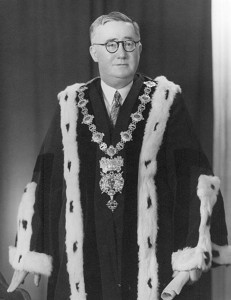 |
William Appleton was a very successful business and a successful politician. He was Mayor of Wellington 1944-50 and Karori’s Appleton Park is named after him. He was knighted in 1950. He was a member of the Wellington Harbour Board, a director of the New Zealand Centennial Exhibition Company, president (1948–51) of the Municipal Association of New Zealand and was on the 1954 board of inquiry which investigated the Tangiwai rail disaster. |
|
| 1895-98 |
Maude Sherwood (Kimbell) |
Artist |
|
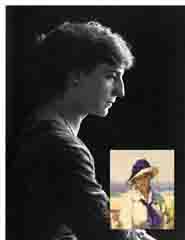
|
Maud teachers included Mabel Hill, Mary Elizabeth Richardson, James Nairn and was she heavily influenced by Arthur Dewhurst Riley, Maude entered competitions and won free places at WTC She completed her teachers certificate by 1899 and took over Nairn’s classes when he died in 1904. In 1910 she held her first exhibition of water colours with varying reviews and in 1911 left NZ. She worked in Europe but took no formal lessons rather relied in Riley’s advice that there was too much teaching especially for promising students” She spent time painting in Breton then moved to Sydney in1913 and was a foundation member of the Australian Academy of Art. She exhibited in the 1940 NZ Centennial exhibition and is recognised as a New Zealand artist who never forgot the subjects techniques and assurance of her early training at WTC. |
|
| 1915-16 |
Len Lye |
Kinetic Artist |
|
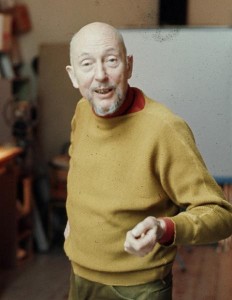
|
Leonard Charles Huia Lye was born on 5 July 1901 in Christchurch. In 1914 after achieving proficiency at Te Aro Primary, he began studying commerce at Wellington Technical College but soon changed to art. He received valuable encouragement from his teacher H. Linley Richardson and his classmate Gordon Tovey. Lye is best known for his kinetic art.Len Lye is a controversial figure in New Zealand art, regarded by some as an outsider whose art has little relevance to the local tradition, but seen by supporters of experimental work as an important role model. |
|
| 1923-25 |
Eric W. Tindall OBE |
New Zealand Rugby & Cricket |
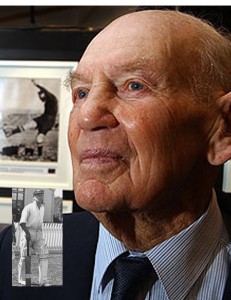 |
Eric Tindill was WHS’ greatest sportsman as well as the most versatile sportsman New Zealand has ever seen. He represented NZ in both Rugby and Cricket and played table tennis for Wellington against the English in the 1930s. He refereed three rugby tests in the 1950s and was also a test cricket umpire. Eric was a Wellington Cricket coach and selector and a national selector. When he retired he was treasurer of the NZ Boxing Association, secretary to Wellington cricket and co founder of the table tennis association. He was the only NZer to catch Bradman out. His achievements have been described as the Everest of sporting achievements. |
|
| 1922-26 |
Muriel Bernice McIntosh |
Artist |
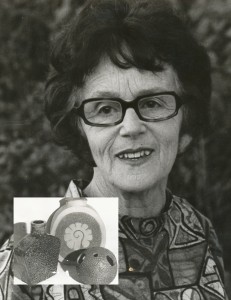 |
While still at school Muriel experienced success as an artist. Her work was exhibited in 1924 at the British Empire Exhibition in London and in Dunedin at the NZ and 1925 – 26 South Seas Exhibition. She later assisted Frederick Coventry to make four murals for the 1940 NZ Exhibition – the first large scale murals in NZ.Muriel taught art and craft while continuing her own copperware, spinning, screen printing and embroidery. Her work is exhibited at Auckland Museum |
|
| |
The 1930’s |
|
|
| 1930-32 |
Gloria Grattan QSM |
Nursing |
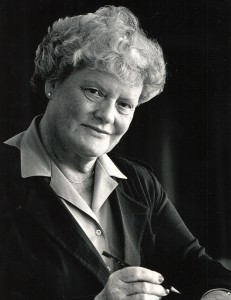 |
Grattan was appointed principal nurse at Wellington Hospital in 1971. This was a time of great change as nursing education progressively moved from the hospital to polytechnics. Gloria played a key role and received a citation from Massey University acknowledging her leadership, mentorship and inspiration to that generation of nurses. When Gloria retired after 17 years, she became the first chairperson of the Mary Potter Hospice Foundation. She was the first Wellingtonian of the Year in 1989 and, was awarded the Queen’s Service Medal for her services to nursing and the community and the Pope John Paul 11 Medal for services to the sick. |
|
| 1937-38 |
Avis Higgs (Beere) |
Painter and Textile Designer |
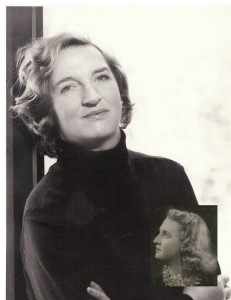 |
Avis began her career and was soon the Head Designer for Silk and Textile Printers in Sydney, a firm famed for its avant garde approach to textiles. With her inspired and refreshing ideas Avis quickly earned a reputation as one of Australasia’s most innovative textile designers. Avis is listed on an Australian Government website as one of four “key historical figures” in Australian design Returning to New Zealand in 1948 Avis created a portfolio of designs featuring Australian and New Zealand motifs. It was these designs that later caught the attention of design historian Douglas Lloyd Jenkins, who curated the touring exhibition Avis Higgs: Joie de Vivre in 2000. Her extraordinary talent as a textile designer is now preserved at the Hawke’s Bay Museum and Art Gallery. Throughput the 1950s and 60s Avis was an active member of the New Zealand Academy of Fine Art, the Architectural Centre Gallery and the Helen Hitchings Gallery. She was a foundation member of the Wellington Society of Watercolour Artists and later she became President. Exhibiting widely throughout New Zealand, Avis won numerous awards including the National Bank award for watercolour in 1964 and the IBM New Zealand Academy of Fine Arts Award for Townscape in 1985. In 2006 Avis was awarded the Governor-General’s Art Award for her contribution to New Zealand art, and held a retrospective of her work at the Academy of Fine Arts. |
|
| |
The 1940s |
|
|
| 1943-46 |
Noel Harrison MA |
Teacher & Writer |
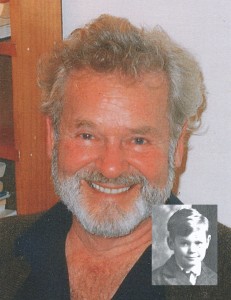 |
After school Noel graduated for Victoria and Canterbury Universities. He worked as a journalist at the Southern Cross and Dominion. He then trained as a teacher and had a long and distinguished teaching career which began at Wellington Technical College. He started the journalism school at the Wellington Polytechnic which became the school of choice for budding journalists. Noel then became the deputy Director of the Wellington Polytechnic and CEO of Northland Polytechnic. Noel is also a writer. He was writer-researcher for the NZ Maori Council, Te Uri –o- hau. He wrote The School that Riley Built; Latimer: a biography; Banks: Behind the Mask and many regional histories of Northland. Noel is one of the school’s heroes. By writing The School that Riley Built he preserved the history of the beginning of this school and that knowledge empowers the school today. He is currently writing a novel about Newtown. |
|
| 1944-46 |
Hal Wagstaff |
OBE, FNZIA Architect, Yacht designer and Olympian |
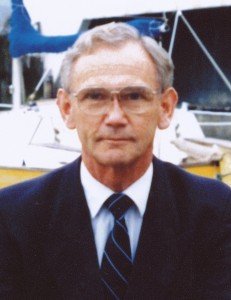 |
Hal began private practice as an architect in 1959. In the 1980’s Hal was a member of the governmental Building Industry Advisory Council. In 1987 he was awarded Fellowship of the NZIA to mark his contribution to architecture and the institute. He served two terms as the councillor of the Borough of Eastbourne. All his life Hal has been a keen yachtsman. He served on many committees of Yachting New Zealand (YNZ), and elected President in 1989. In 1998 he was awarded the ISAF Gold medal and individual life membership. As an ISAF International Judge and Umpire, Hal officiated at more the 50 major international or World championship regattas. Hal raced yachts until 2009, winning national, South Island and North Island titles along the way. He also designed yachts. His designs have won most of NZ’s centreboard-boat national events and many New Zealand and overseas keel-yacht trophy races. The Dorling-Kindersley ‘Encyclopaedia of Yachting’ (1989) listed Hal among the world’s top designers. In 1994 Hal was awarded membership of the NZ Olympic order in recognition of outstanding service to the Olympic movement. |
|
| 1946-49 |
Barrie Carruthers |
Entrepreneur & Inventor |
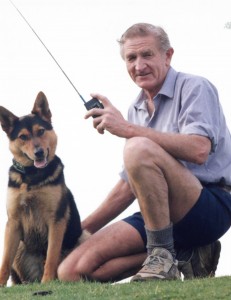 |
At Wellington Tech, Barrie undertook an engineering course in which he revelled. He says it him set up with for skills for life. He went on to get a grounding in economics, and spent several years farming during which he obtained an agricultural diploma at Massey College. When television began, he developed a repeater system that included 37 trasmitter stations so back country Taranaki got TV long before NZBC supplied the service Following on from that he developed the Electronic Dog Training Aid – which was featured on Country Calendar at that time. He established a manufacturing facility initially in the little village of Awakino and went on to market the Training Aid worldwide. Numerous other farming products followed. In the 1980’s he established New Zealand’s first and subsequently the largest thick film microcircuits manufacturing facility- Precisionmicro. Thickfilm technology is used wherever high reliability is required, such as in space satellites and heart pacemakers. Circuit elements are physically printed on to thin ceramic sheets and then fired at high temperatures to form working electronic modules. When he started, Thickfilm technology was not known to be suitable for high temperature applications. However raw research and development, normally undertaken only by large multinationals, yielded a dream result in a relatively short time. This was largely due to an Barrie’s intelligent initial choice of raw materials – a measure of native instinct and good luck – which combined to produce working prototypes within just two years. Now Precisionmicro is supplying the larger NZ manufacturers, but the majority of the microcircuits are exported China. Barrie has won innovation and manufacturing awards for his inventions. He says “At 78 I am not particularly interested in retiring. Having too much fun. Thanks for the great years I had a Wellington Tech. Loved Mechanics, failed English! – Poor old Max Riske. |
| |